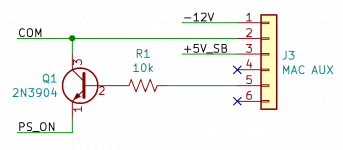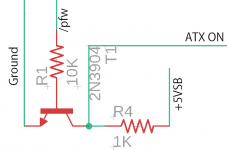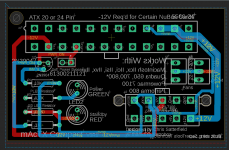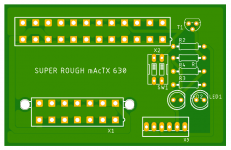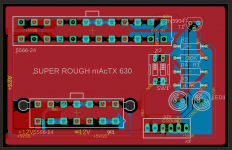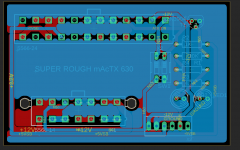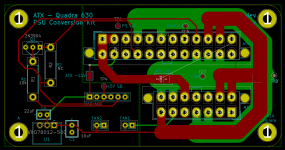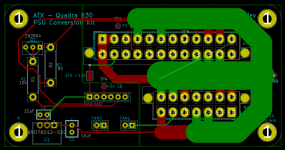Hi All!
I just noticed a link to this thread from Adrian's video.
As it turns out, I was actually working on such a thing a few weeks ago. Attached is a picture of it.
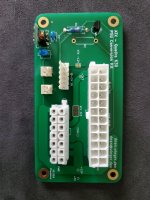

I've included an optional 3.3V power rail (for 3.3V boards) and optional -12V power (for power supplies that don't offer enough current or are extremely out of spec).
This is my first PCB and I am absolutely not an electrical engineer. I have not had the time to test it extensively although I have noticed some compatibility issues with some power supplies. I suspect it is something to do with the transistor/resistor combo. Maybe someone can spot a glaring oversight. Otherwise, I can describe the problem.
If there is enough interest, I am looking to make the project open source and maybe even ship out some kits.
I just noticed a link to this thread from Adrian's video.
I'm stoked about a possibility of a 630 series PSU solutions. Already had 3 of them buggers blow in quick succession.
It's also one of my very favourite 68K models too being mine is the DOS version with all the AV/networking gear. Oh and IDE, which saves a lot of headaches.
As it turns out, I was actually working on such a thing a few weeks ago. Attached is a picture of it.


I've included an optional 3.3V power rail (for 3.3V boards) and optional -12V power (for power supplies that don't offer enough current or are extremely out of spec).
This is my first PCB and I am absolutely not an electrical engineer. I have not had the time to test it extensively although I have noticed some compatibility issues with some power supplies. I suspect it is something to do with the transistor/resistor combo. Maybe someone can spot a glaring oversight. Otherwise, I can describe the problem.
If there is enough interest, I am looking to make the project open source and maybe even ship out some kits.

